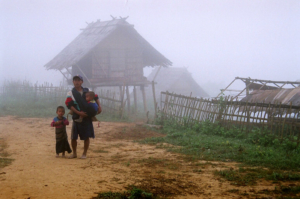Everything You Need to Know About Food Insecurity in Laos
 Although the poverty rate in Laos more than halved between 1993 and 2018, nearly one in five households still experience poverty today. Not surprisingly, food insecurity in Laos continues to be a concern. Laos ranked 82nd out of 121 countries on the Global Hunger Index in 2022. The World Food Programme (WFP) reports that about 33% of Laotian children younger than 5 experience stunting and the RFA (Radio Free Asia) states that, in the Xienghone district, more than 20% of Laotian children younger than 5 suffer from malnourishment.
Although the poverty rate in Laos more than halved between 1993 and 2018, nearly one in five households still experience poverty today. Not surprisingly, food insecurity in Laos continues to be a concern. Laos ranked 82nd out of 121 countries on the Global Hunger Index in 2022. The World Food Programme (WFP) reports that about 33% of Laotian children younger than 5 experience stunting and the RFA (Radio Free Asia) states that, in the Xienghone district, more than 20% of Laotian children younger than 5 suffer from malnourishment.
The Human Capital Index report by the World Bank indicates that “Lao children born today only reach 45% of productivity they could have if afforded full health and education.” This shows that these deprivations are not only detrimental to the individual but to the progression of the country as a whole.
Reasons Behind Food Insecurity in Laos
At the onset of the COVID-19 pandemic, hunger in Laos rose. Prior to the pandemic, Laos depended on food aid from Vietnam to meet citizens’ food needs. However, when countries closed their borders, this was no longer possible. Additionally, the food programs already in place in Laos are failing as these initiatives are not able to “[keep]pace with the changing circumstances,” including changing weather patterns, natural disasters and “land mismanagement” according to the RFA.
Laos’ geographic location also makes the nation more vulnerable to droughts and floods. These extreme weather events severely impact food security in Laos by destroying existing crops, thus affecting the livelihoods of farmers. Furthermore, as a landlocked and predominantly rural country, it is more difficult to transport and access food.
Additionally, issues regarding access to clean water and sanitation contribute to poor nutritional outcomes in Laos. A lack of water, sanitation and hygiene facilities can lead to diseases that impact the body’s ability to absorb nutrients. ReliefWeb reports that “malnutrition can be widespread even in regions with plentiful supplies of affordable food because this food is not well absorbed by the body.”
Efforts to Reduce Food Insecurity in Laos
The WFP has been “working in partnership with the Government of Lao PDR on promoting access to nutritious food for school-age children for two decades,” according to the WFP website. To improve nutrition and reduce hunger among children, the WFP leads school feeding programs. During times of crisis and emergency when the government cannot adequately provide for citizens’ needs, the WFP “provides nutritious food and cash assistance.”
The Adventist Development and Relief Agency (ADRA) is helping to address hunger and malnutrition in Laos through various programs and interventions. As part of the positive Deviance/Hearth initiative, a community nutrition rehabilitation program, in 2021, ADRA Lao’s health and nutrition officer, known as Chef Touktick, taught children and women how to cook healthy and nutritious food.
By implementing long-term strategies, the government of Laos can ensure sustainable solutions to food insecurity in Laos while improving the quality of life of citizens.
– Priya Maiti
Photo: Flickr
